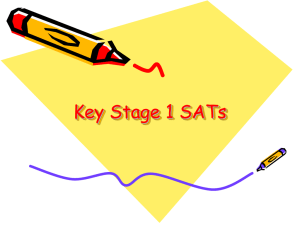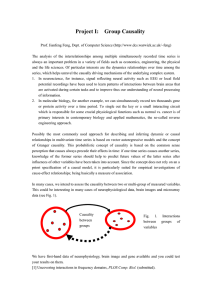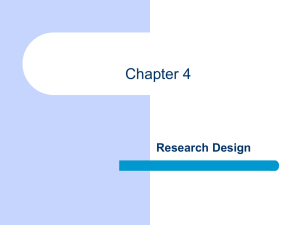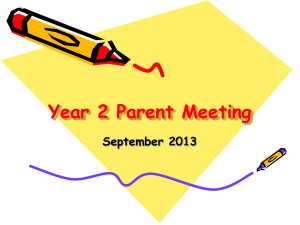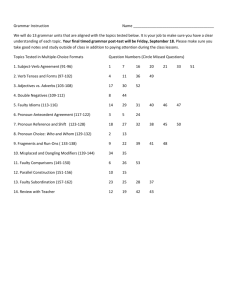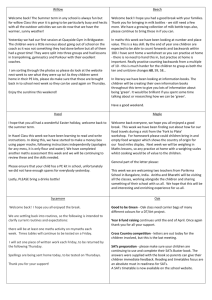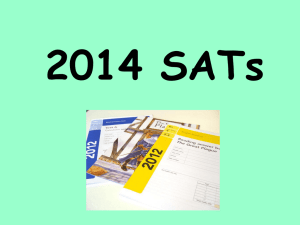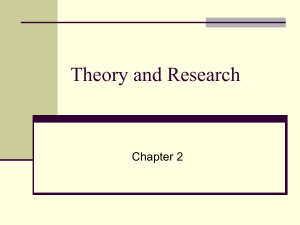Three Purposes of Research
advertisement
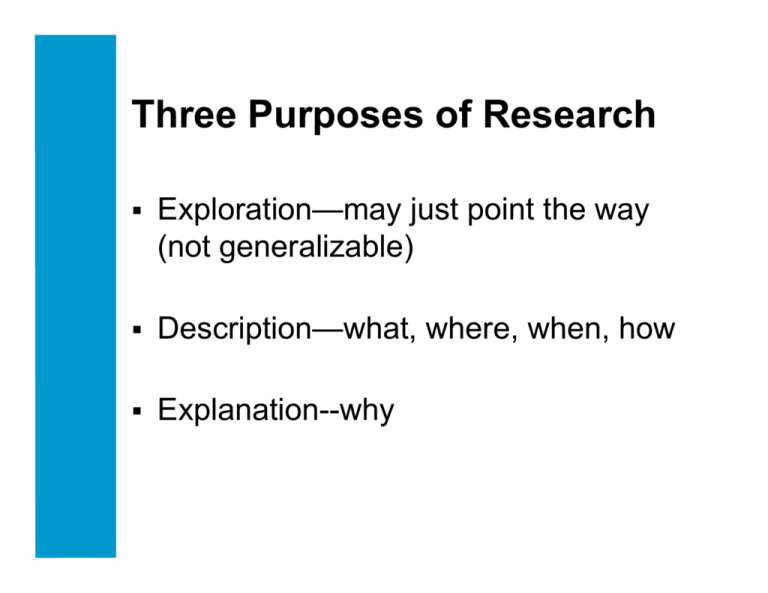
Three Purposes of Research Exploration—may just point the way (not generalizable) Description—what, where, when, how Explanation--why Criteria for Nomothetic Causality A statistical correlation between the two variables. Time order--the cause takes place before the effect. Non-spurious--there is no third variable that can explain away the observed correlation as spurious. Example of a Spurious Causal Relationships Causality: Does not require complete causation. Allows for exceptions Uses probability Necessary and Sufficient Causes Necessary cause represents a condition that must be present for the effect to follow. --”going to college” causes “college degree” Sufficient cause represents a condition that if present, guarantees the effect in question. --”skipping a test” causes “failing the test” Units of Analysis: What is examined in order to create summary descriptions Unit Levels: Individuals Groups Organizations Social artifacts Units of Analysis and Faulty Reasoning Ecological fallacy – assuming something learned about an ecological unit says something about the individuals in the unit. Example: Universities with high SATs have more women therefore women have higher SATs (What is the unit of analysis in this example?) Units of Analysis and Faulty Reasoning Reductionism – Reducing something to a simple explanation when in reality it is complex. Example—people die in nursing homes because of old age (What is the unit of analysis?) The Time Dimension Cross-Sectional Studies—one point in time (can be done quickly & relatively inexpensively) Longitudinal Studies—done over time (can be expensive and time consuming) --Trend Studies—change of a population (e.g., U.S. census in 60s, 70s, and 80s) --Cohort Studies—change of a particular group (e.g., people born in 1980s) --Panel Studies—change of same people How to Design a Research Project 1. Define the topic and purpose of your project. 2. Conduct a literature review on the topic 3. If the literature provides existing knowledge on the topic then review any existing theories presented, consider whether to test one or test each. How to Design a Research Project Develop hypotheses related to one or more theories --develop concepts for each hypothesis (conceptualization) Choose a research method(s) to test hypotheses (e.g., survey, observation, documents) How to Design a Research Project Collect data Analyze data Report writing and/or application Elements of a Research Proposal Selecting topic --where will money come from How much to ask for --establishing budget Proposal design --introduction --review of literature --methodology --other (description of researchers & funding institution, how contributes to what funder wants Elements of a Research Proposal Schedule Budget Life of proposal reviewers --needs to be easy to read --good “catchy” intro --headings that match scoring of proposal Why proposal have or have not failed (hand out)


